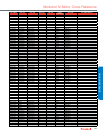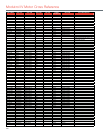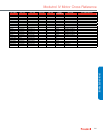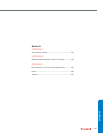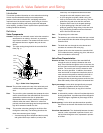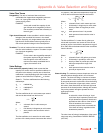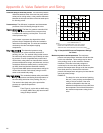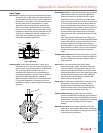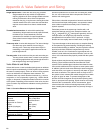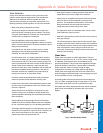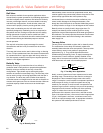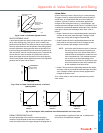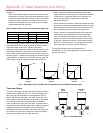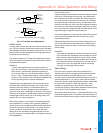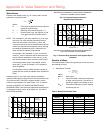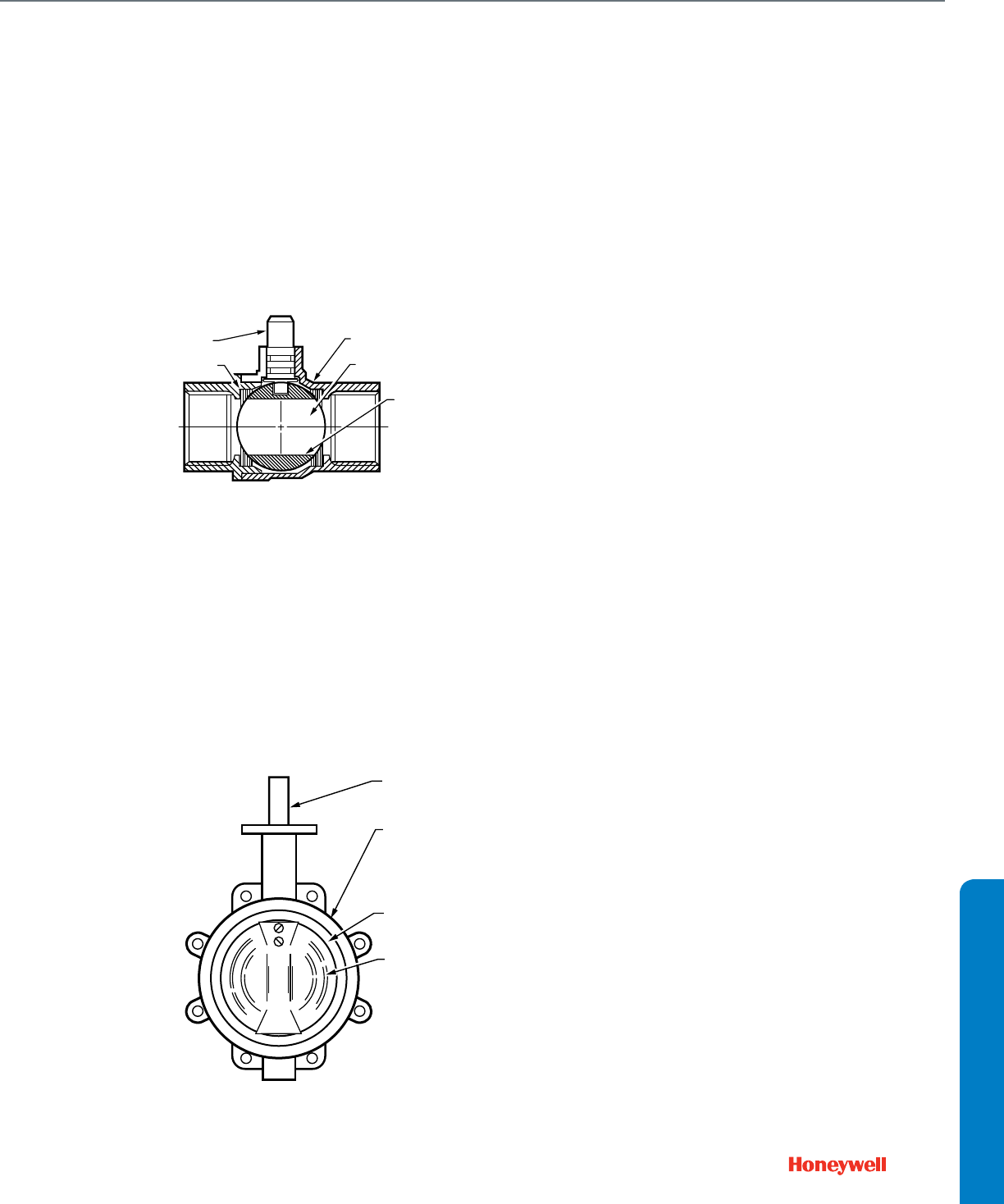
247
APPENDIX
Valve Types
Ball valve:A ball valve has a precision ball between two seats
with a body (Fig. 3). Ball valves have several port sizes
for a give body size and go from closed to open with a
90 degree turn of the stem. They are available in both
two-way and three-way configurations. For HVAC
applications, ball valve construction includes brass
and cast iron bodies; stainless steel, chrome plated
brass, and cast iron balls; resilient seats with various
temperature ratings. Ball valves provide tight shut-off,
while full port models have low flow resistance, and
models with flow characterizing inserts can be
selected for modulating applications.
Fig. 3. Ball Valve.
Butterfly valve: A valve with cylindrical bod, a shaft, and a
rotating disc (Fig. 4). The disc rotates 90 degrees from
open to closed. The disc seats against a resilient body
liner or spring-loaded metal seat and may be
manufactured for tight shut-off or made smaller for
reduced operating torque at lower close-off. Butterfly
valves have limited rangeability for modulating
applications so are used mainly for two-way operation.
For three-way applications, two butterfly valves are
assembled to a pipe tee with linkage for simultaneous
operation.
Fig. 4. Butterfly Valve.
Double-seated valve: A valve with two seats, plugs, and discs.
Double-seated valves are suitable for applications
where fluid pressure is too high to permit a single
seated valve to close. The discs in a double-seated
valve are arranged so that in the closed position there
is minimal fluid pressure forcing the stem toward the
open or closed position; the pressure on the discs is
essentially balanced. For a valve of given size and port
area, the double-seated valve requires less force to
operate than the single-seated valve so the double
seated valve can use a smaller actuator than a single
seated.
Also, double-seated valves often have a larger port
area for a given pipe size. A limitation of double-seated
valves is that they do not provide tight shut-off. Since
both discs rigidly connect together and changes in
fluid temperature can cause either the disc or the valve
body to expand or contract, one disc may seat before
the other and prevent the other disc from seating
tightly.
Flanged-end connections: A valve that connects to a pipe by
bolting a flange on the valve to a flange screwed onto
the pipe. Flanged connections are typically used on
large valves only.
Gate valve: A valve that controls flow using a gating
mechanism, usually a plate, that moves across the
valve seat instead of pushing against the flow. The
actuator works against the friction of the seals rather
than directly against the force of the water. Gate valves
are inherently self-sealing and are often capable of
high close-off pressures without an actuator. Ball
valves are a type of gate valve.
Globe valve: A valve which controls flow by moving a circular
disk against or away from a seat. When used in
throttling control a contoured plug (throttling plug)
extends from the center of circular disk through the
center of the seat for precise control (Fig. 1).
Pressure-balanced valve: A globe valve with a sealed
pressure chamber built into the plug, which equalizes
head pressure across the seat and allows most of the
actuator force to be used to close off the flow, resulting
in very high close-off ratings with very low seat
leakage.
Reduced-port valve: A valve with a capacity less than the
maximum for the valve body. Ball, butterfly, and smaller
globe valves are available with reduced ports to allow
correct sizing for good control.
STEM
BALL
BODY
PORT
SEATS
M12228
M12247
BODY
DISC
RESILIENT
SEAL
STEM
Appendix A: Valve Selection and Sizing



